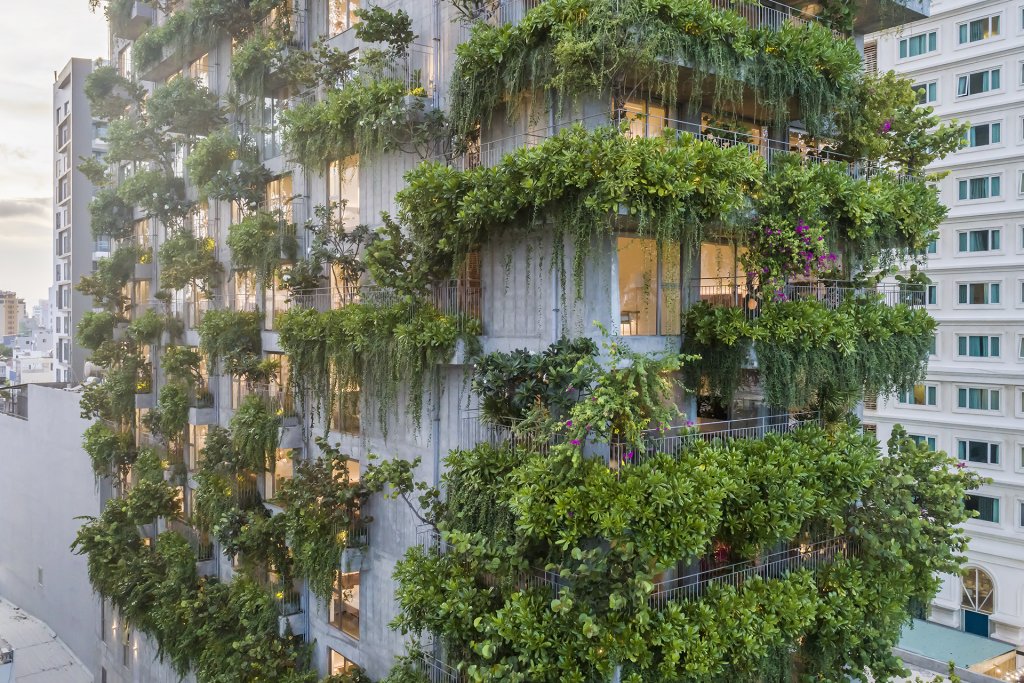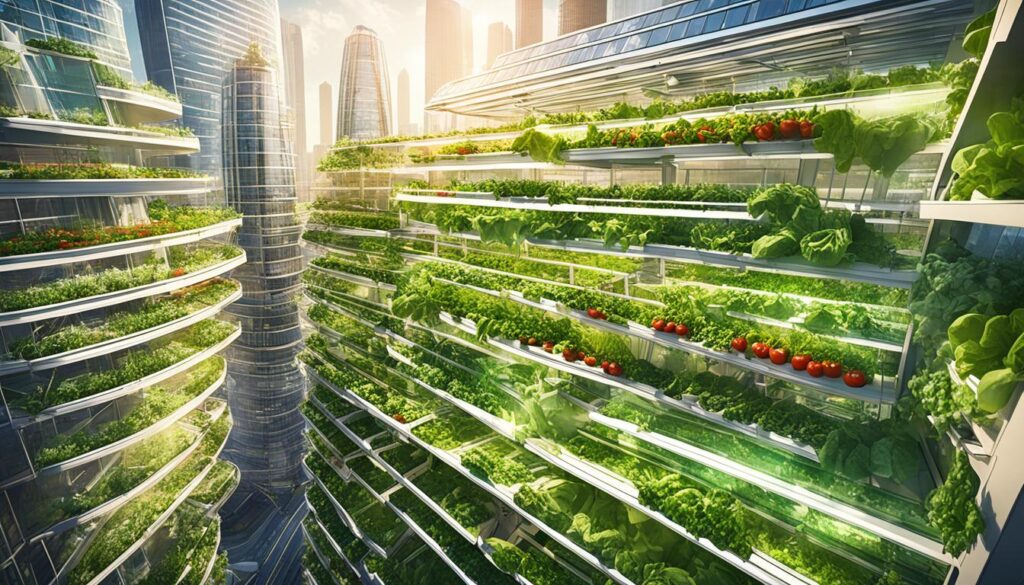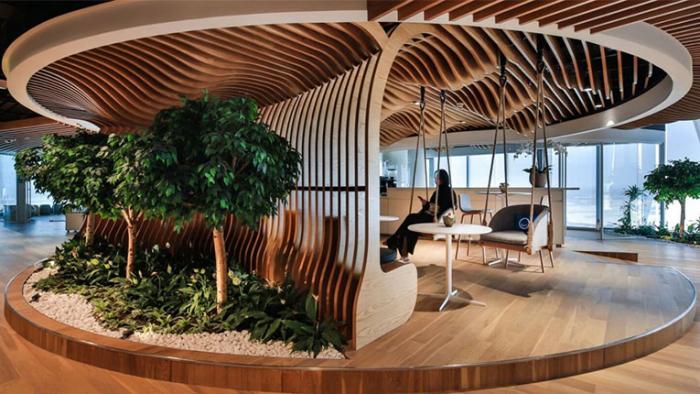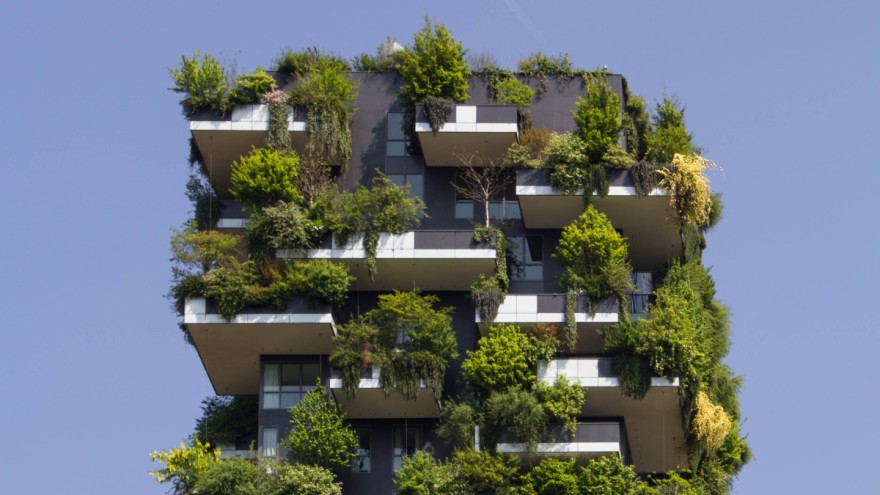Bringing Nature to the City: Incorporating Natural Shapes and Forms in Urban Architecture
Urban architecture is undergoing a significant transformation, moving beyond traditional designs to incorporate the rigid structures of cityscapes alongside the organic beauty of nature.
This article delves into the concept of urban architecture, emphasizing the critical role of integrating natural shapes and forms into design. By enhancing visual appeal, promoting sustainability, and fostering a deeper connection to the environment, these elements have the potential to significantly transform urban spaces.
We will examine practical strategies for incorporating nature into architectural design, showcase exemplary case studies, and address the challenges encountered in this innovative pursuit. This exploration invites readers to reimagine the urban landscape through nature-inspired design.
What Is Urban Architecture?
Urban architecture represents a multidisciplinary field that concentrates on the design and development of buildings and public spaces within urban settings. This branch of architecture places significant emphasis on the harmonious integration of architectural aesthetics and functionality in relation to the surrounding urban landscape.
By prioritizing sustainability and environmental integration, urban architecture aims to create spaces that resonate with the communities they serve, thereby fostering a sense of place through innovative design principles.
As urban areas continue to expand, the necessity for thoughtful urban design that balances form and function becomes increasingly critical, promoting both community engagement and ecological sustainability.
What Are Natural Shapes and Forms?
Natural shapes and forms encompass the organic structures and patterns found in nature that serve as inspiration for various design methodologies across multiple disciplines, particularly in architecture. These forms can range from the fluidity of a river to the intricate patterns of leaves, showcasing a diverse array of shapes that enhance both aesthetic appeal and functionality in design.
By drawing inspiration from the aesthetics of nature, architects can create spaces that evoke a deeper emotional connection with their surroundings, utilizing natural elements to achieve visual balance and harmony with the environment.
This approach not only enriches the visual landscape but also improves user experience by fostering a sense of comfort and well-being. For example, structures that replicate natural forms, such as the Eden Project in the UK with its geodesic bubbles, create inviting spaces that resonate positively with users.
Ecological architecture embraces these principles by incorporating sustainable materials and energy-efficient designs inspired by nature’s efficiencies.
By employing biomimicry, architects seek solutions found in nature, such as the ventilation systems of termite mounds, to design buildings that are both aesthetically pleasing and environmentally responsible, ultimately contributing to a more sustainable future.
Why Should Urban Architecture Incorporate Natural Shapes and Forms?
Incorporating natural shapes and forms into urban architecture is crucial for fostering a deeper connection between individuals and their environment.
This integration enhances architectural innovation by promoting sustainable practices that align with urban landscapes and the local ecosystem.
By embracing biophilic design principles, urban spaces can evoke a sense of tranquility and well-being, thereby contributing to the development of happier and healthier communities.
The inclusion of organic forms not only enhances the aesthetic appeal but also supports climate-responsive design that respects the natural context, ultimately elevating the user experience within urban settings.
1. Enhances Aesthetics
The incorporation of natural shapes and forms in urban architecture significantly enhances architectural aesthetics, creating visually harmonious spaces that resonate with users. By utilizing sculptural elements that emulate the organic patterns found in nature, architects are able to develop designs that not only capture attention but also foster a sense of calm and comfort.
This innovative design approach facilitates a deeper appreciation of the built environment, encouraging community engagement and enriching the overall spatial experience.
As urban landscapes continue to evolve, there is a discernible shift towards architectural trends that prioritize these organic elements, promoting environments that integrate seamlessly with their surroundings.
Designs featuring curvilinear forms, fluid structures, and biophilic elements emphasize harmony and enhance user experience by promoting interaction and connection with nature. This strategy embodies the principles of environmental sustainability and human-centric design, allowing inhabitants to find tranquility amid the hustle and bustle of urban life.
Ultimately, these principles cultivate a visual narrative that aligns with contemporary ideals of well-being and creativity.
2. Promotes Sustainability
Incorporating natural shapes and forms into urban architecture promotes sustainability by encouraging the utilization of eco-friendly materials and design practices that align with the environment. Sustainable architecture draws upon these natural inspirations to develop innovative structures that are energy-efficient and minimize resource consumption.
This approach fosters ecological sustainability, ensuring that urban developments are adaptable to changing environmental conditions while preserving local ecosystems.
By employing materials such as reclaimed wood, bamboo, and recycled metals, architects can create buildings that not only reduce waste but also integrate harmoniously with their surroundings.
Adaptive reuse strategies transform old warehouses and factories into vibrant living spaces or community centers, thereby minimizing the need for new construction and conserving valuable resources.
These practices exemplify a commitment to ecological sustainability, demonstrating that modern architecture can coexist with nature rather than oppose it, ultimately leading to healthier urban environments and a reduced overall ecological footprint.
3. Connects People to Nature
The integration of natural shapes and forms in urban architecture establishes a significant connection between individuals and nature, which is vital for enhancing mental and emotional well-being.
Through the principles of biophilic design, architects can develop community spaces and outdoor environments that promote interaction with natural elements. This connection not only enriches the quality of life for urban residents but also cultivates a sense of community and belonging, effectively bridging the divide between urban environments and the natural world.
By incorporating features such as flowing curves, organic patterns, and sustainably sourced materials, these designs resonate profoundly with individuals, allowing them to feel more grounded and in tune with their surroundings.
For instance, parks designed with meandering pathways and native plant gardens can provide serene retreats amid the busyness of urban life.
Prominent examples include the High Line in New York City, where repurposed railway tracks have been transformed into a lush elevated garden, and Millennium Park in Chicago, which seamlessly incorporates natural landscapes into a dynamic community hub.
These spaces exemplify how the amalgamation of nature with human habitats promotes social interaction, encourages physical activity, and enhances overall well-being.
How Can Natural Shapes and Forms Be Incorporated in Urban Architecture?
Incorporating natural shapes and forms into urban architecture necessitates a deliberate strategy that takes into account site analysis, contextual factors, and the utilization of organic materials.
Architects can accomplish this objective by integrating green spaces and outdoor areas into their designs, thereby fostering environments that emphasize environmental harmony and enhance the user experience.
By prioritizing adaptive reuse and sustainable practices, urban architecture can effectively merge with its natural surroundings, resulting in spaces that are both functional and aesthetically compelling.
1. Use of Organic Materials
The incorporation of organic materials in urban architecture is essential for creating structures that embody natural shapes and forms, while also promoting sustainability and environmental harmony.
By selecting eco-friendly materials that exhibit natural textures and colors, architects can design buildings that resonate with their surroundings, thereby enhancing both aesthetic appeal and user experience.
This emphasis on materiality not only contributes to the overall design but also supports ecological balance within urban environments.
Utilizing elements such as bamboo, reclaimed wood, and rammed earth offers numerous advantages, including reduced carbon footprints and enhanced energy efficiency.
These materials effectively mimic the surrounding landscape while promoting thermal comfort by absorbing sunlight and regulating indoor temperatures.
Furthermore, these sustainable choices foster biodiversity by utilizing local resources that support the ecosystem.
The application of organic finishes adds a tactile dimension, cultivating a sense of connection between inhabitants and the natural world.
Ultimately, urban spaces designed with organic materials have the potential to transform city living into a more harmonious coexistence with nature.
2. Incorporation of Green Spaces
Incorporating green spaces into urban architecture is essential for fostering a connection between the built environment and nature, thereby enriching the community’s experience of the urban landscape. These outdoor areas can provide habitats for urban biodiversity while promoting community engagement and social interaction.
By creating accessible green spaces, architects can enhance health and well-being, making urban environments more dynamic and inviting.
Various types of green spaces play critical roles in achieving these outcomes.
- Parks serve as communal hubs for recreation and relaxation,
- while green roofs introduce vegetation atop buildings, reducing heat and improving air quality.
- Community gardens provide residents with opportunities to cultivate their own produce, instilling a sense of ownership and pride within the neighborhood.
- Additionally, integrating green walls can enhance aesthetic appeal while benefiting local wildlife.
Collectively, these elements contribute not only to the ecological health of urban areas but also to strengthening the bonds among residents, fostering a vibrant and engaged community.
3. Mimicking Natural Elements
Mimicking natural elements through biomimicry represents a powerful strategy in urban architecture, enabling designers to derive inspiration from the forms and functions present in nature. By meticulously studying and replicating these natural designs, architects can develop innovative structures that adapt effectively to their environments, thereby enhancing sustainability and the overall user experience.
This design adaptation not only enriches architectural aesthetics but also promotes ecological resilience within urban landscapes.
For example, the Eden Project in Cornwall features geodesic biomes inspired by the structure of carbon molecules, creating environments that nurture plant diversity while minimizing energy consumption.
Similarly, the Bosco Verticale in Milan employs a vertical forest concept, integrating thousands of trees into its facade, which aids in the mitigation of air pollution and enhancement of biodiversity.
These illustrations underscore how urban spaces can evolve into healthier and more livable environments, fostering a deeper connection between inhabitants and their surroundings.
By adopting biomimetic strategies, urban architecture addresses ecological challenges while simultaneously elevating the overall quality of life for its users.
Examples of Urban Architecture Incorporating Natural Shapes and Forms
Numerous examples of urban architecture incorporate natural shapes and forms, demonstrating the potential of nature-inspired design to create innovative structures that enhance both functionality and aesthetics.
These designs frequently reflect a commitment to architectural diversity and contextual relevance, serving as public art that engages communities and fosters a connection to nature.
From green roofs to biophilic elements, these structures exemplify how urban environments can effectively embrace and celebrate the aesthetics of nature.
1. Gardens by the Bay, Singapore
Gardens by the Bay in Singapore stands as a premier example of urban architecture that seamlessly integrates natural shapes and forms. This remarkable public space exemplifies the fusion of ecological architecture with innovative structures, creating an iconic attraction.
Central to this is the Supertree Grove, which emulates the structure of trees while incorporating sustainable technologies designed to enhance urban biodiversity and promote environmental integration. The blend of vibrant greenery and state-of-the-art design underscores a commitment to harmonizing urban development with the inherent beauty of nature.
The incorporation of solar panels and rainwater harvesting systems illustrates how contemporary infrastructure can work in unison with the environment. The Cloud Forest and Flower Dome display a wide array of ecosystems and plant species, providing visitors with the opportunity to explore diverse flora from various climates throughout the year.
This not only serves as an educational resource but also encourages communities to reconsider the role of green spaces in urban planning.
As a multifaceted destination, Gardens by the Bay promotes both relaxation and recreation, emphasizing the importance of integrating nature into the fabric of bustling urban life.
2. Bosco Verticale, Italy
Bosco Verticale, situated in Milan, Italy, exemplifies the principles of sustainable architecture through its innovative vertical forest design, which effectively integrates natural forms into urban living. This residential complex features balconies embellished with over 9,000 trees and 20,000 plants, thereby creating a vibrant ecosystem that enhances urban biodiversity and improves air quality.
By prioritizing environmental integration and biophilic design, Bosco Verticale serves as a paradigm for how urban architecture can harmonize with nature while providing comfortable living spaces.
The structure stands as a testament to the potential of green architecture, demonstrating how thoughtful design can significantly transform urban landscapes. Each floor of the towers hosts a distinct arrangement of greenery, promoting not only aesthetic appeal but also providing habitats for various bird species and insects.
The cascading plants operate synergistically to mitigate noise pollution, offer natural insulation, and address the urban heat island effect.
This pioneering approach encourages other urban developments to consider ecological factors, illustrating the essential relationship between architecture and biodiversity, and inspiring cities worldwide to pursue sustainable growth.
3. The Lotus Building, China
The Lotus Building in Wujin, China, exemplifies organic design, drawing inspiration from the inherent beauty of the lotus flower and highlighting the cultural significance of nature in architecture. This innovative structure functions as a community center, promoting social interaction and engagement while embodying principles of environmental sustainability.
The building’s unique form and design encourage visitors to connect with both the structure and its environment, thereby enhancing the spatial experience and fostering a strong sense of community identity.
Characterized by fluid lines that emulate the delicate petals of a lotus, the architecture not only captivates the eye but also harmonizes with the urban landscape, instilling a sense of tranquility within a bustling environment. The integrated green spaces and reflective ponds contribute to the aesthetic appeal while promoting biodiversity, effectively demonstrating how urban settings can coexist with nature.
This space frequently hosts community initiatives, serving as a gathering point for a variety of cultural activities, workshops, and events. Such offerings enable residents to strengthen their connections and appreciate shared experiences.
This approach aligns with contemporary urban planning principles, wherein fostering community engagement is essential for cultivating a thriving society.
Challenges and Limitations of Incorporating Natural Shapes and Forms in Urban Architecture
Incorporating natural shapes and forms into urban architecture poses several challenges and limitations that architects must address to achieve successful outcomes.
Key concerns include the costs and maintenance associated with unique designs, adherence to building codes and regulations, and the constraints imposed by limited space in densely populated urban areas.
Effectively addressing these challenges necessitates innovative design adaptation and strategic planning to ensure that the integration of natural elements does not compromise the functionality or viability of urban spaces.
1. Cost and Maintenance
One of the significant challenges in integrating natural shapes and forms into urban architecture is the associated cost and maintenance requirements, which often exceed those of conventional designs. Sustainable architecture frequently entails the use of eco-friendly materials and innovative technologies that can elevate initial construction expenses.
The ongoing maintenance of these distinctive structures can present challenges for urban planners and developers, necessitating meticulous consideration and planning.
To address these financial obstacles, stakeholders are increasingly investigating alternative funding sources, such as grants aimed at green building initiatives and partnerships with environmental organizations. By implementing modular construction techniques and investing in energy-efficient systems, cities can not only reduce upfront costs but also diminish operational expenses over time.
Highlighting the environmental and social benefits of sustainable architecture, such as improved air quality and enhanced community well-being, can assist in garnering public support and facilitating investment, ultimately rendering natural designs more feasible within urban landscapes.
2. Building Codes and Regulations
Building codes and regulations can present considerable challenges to the integration of natural shapes and forms in urban architecture, often necessitating strict compliance that may conflict with innovative design concepts. Architects must adeptly navigate these regulatory frameworks while advocating for flexibility that promotes creative solutions and sustainable practices within urban planning.
This adaptation in design is crucial for achieving a balance between regulatory compliance and artistic expression.
The challenge extends beyond mere adherence to these regulations; it also encompasses the imperative to harmonize functionality with aesthetic appeal. While such codes are established to ensure safety and sustainability, they can unintentionally hinder creativity by constraining the range of design possibilities.
To succeed within these constraints, urban architects may need to investigate alternative materials and construction techniques that fulfill regulatory standards while still challenging the limits of traditional design. Collaborating with policymakers and community stakeholders can foster a dialogue that emphasizes the importance of innovative urban aesthetics, ultimately resulting in a more harmonious integration of form, function, and sustainability.
3. Limited Space in Urban Areas
The limited space available in urban areas poses a significant challenge for architects aiming to incorporate natural shapes and forms into their designs. This constraint necessitates an emphasis on functional design and urban resilience, requiring innovative strategies to maximize space while preserving aesthetic appeal and ecological integrity. Achieving this balance is crucial for the successful integration of natural elements within urban landscapes.
In such contexts, the adoption of multi-functional spaces is essential, allowing users to experience both beauty and practicality in every aspect of the environment. For example, the integration of vertical gardens, green walls, and rooftop terraces not only enhances the visual appeal of buildings but also contributes positively to air quality and biodiversity.
Employing modular design principles can further optimize smaller areas, rendering them more adaptable to the evolving needs of urban settings. By prioritizing innovative architectural solutions, designers have the opportunity to transform limited spaces into inspiring environments that foster a harmonious connection between nature and urban life.
Frequently Asked Questions
What are some benefits of incorporating natural shapes and forms in urban architecture?
Incorporating natural shapes and forms in urban architecture can provide a sense of harmony and balance, as well as a connection to the surrounding environment. This can also promote sustainability and improve the overall aesthetic of a city.
How can natural shapes and forms be incorporated into urban architecture?
There are several ways to incorporate natural shapes and forms into urban architecture, such as using organic materials like wood and stone, incorporating natural elements like plants and water features, and designing buildings with curves and undulations instead of straight lines.
Are there any challenges to incorporating natural shapes and forms in urban architecture?
One challenge is finding a balance between modern urban design and natural elements. Additionally, maintenance and upkeep of natural elements can be costly and time-consuming, especially in urban environments with limited space.
How does incorporating natural shapes and forms in urban architecture impact the community?
Incorporating natural shapes and forms in urban architecture can create a more inviting and livable environment for residents. This can also attract tourists and improve the overall economic growth of a city.
Can natural shapes and forms be incorporated into all types of urban architecture?
Yes, natural shapes and forms can be incorporated into various types of urban architecture, from residential buildings and commercial spaces to public parks and plazas. It all depends on the design and vision of the architect.
How can incorporating natural shapes and forms in urban architecture benefit the environment?
By using natural materials and elements, incorporating green spaces, and promoting sustainable design practices, incorporating natural shapes and forms in urban architecture can help reduce the impact of urban development on the environment and promote eco-friendliness.

I’m Bruno, an architect with a deep passion for Biophilic Design in Urban Architecture. Throughout my career, I’ve focused on integrating natural elements into urban planning, and I created this site to share my insights and foster a deeper understanding of how biophilic principles can significantly enhance urban living. Dedicated to sustainable development, I continually explore innovative design solutions that promote both environmental and human well-being in city landscapes.














Publicar comentário